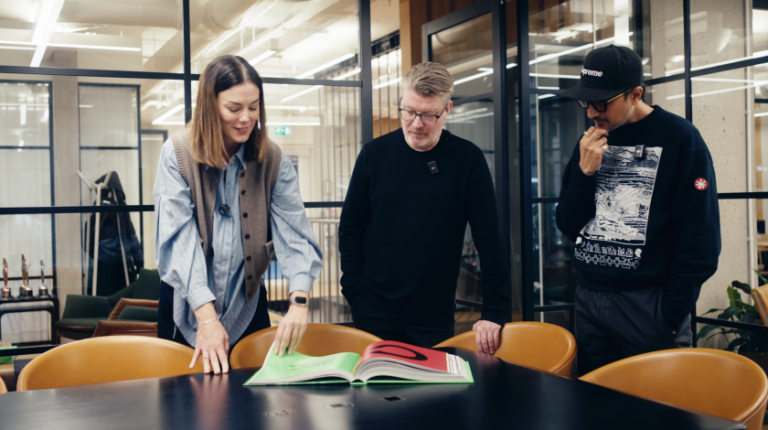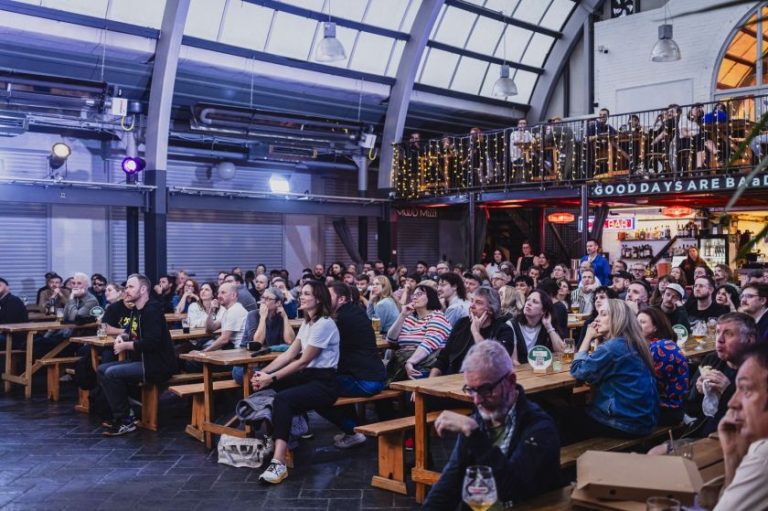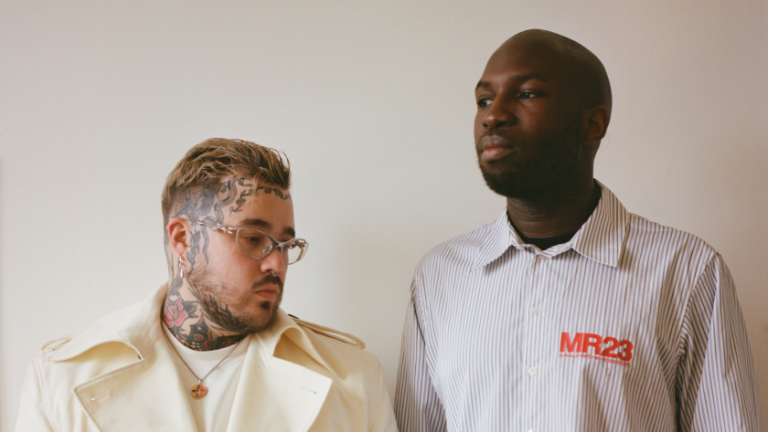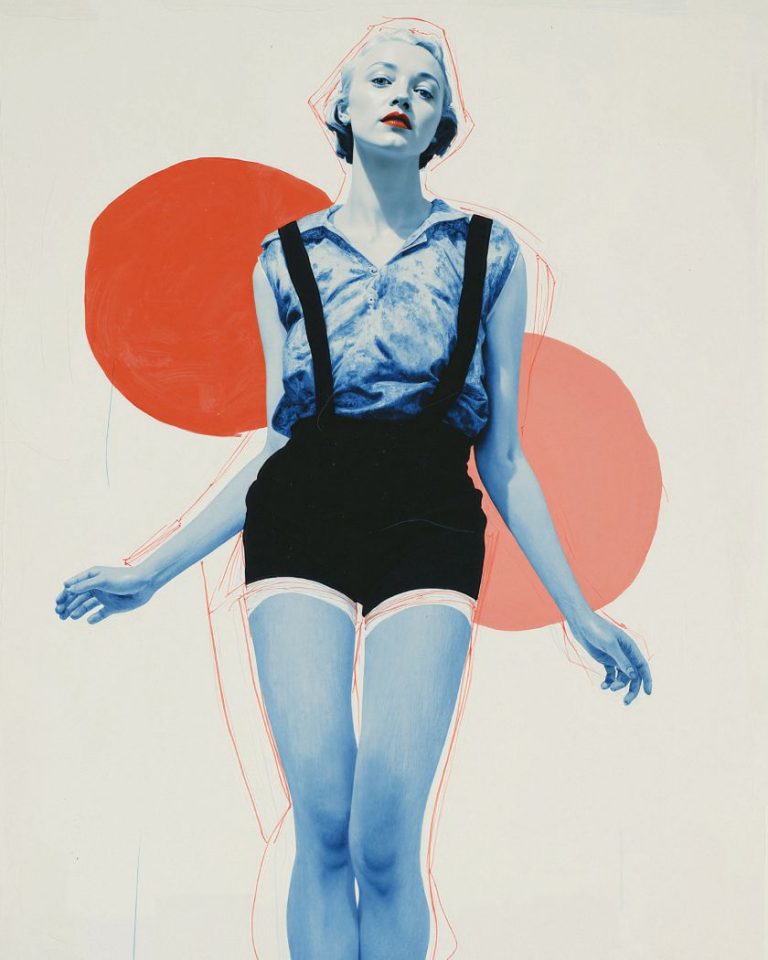Image licensed via Adobe Stock
As the leaves change colour and the air turns crisp, many creatives find themselves grappling with a series of challenges in their professional lives. From lack of work to seasonal blues, here’s how to navigate the hurdles of the autumn season.
The creative industry is ever-evolving, and with each season comes a new set of challenges. This autumn, artists, designers and other creative professionals are facing a myriad of issues, from the lingering effects of a slow summer to the looming pressures of the holiday season.
In a recent discussion on Threads, members of the Creative Boom community shared some pressing problems that we’re hearing from more and more of you these days. So, we thought it might be useful to address them in an article to help you not just survive but thrive in the coming months.
So whether you’re a seasoned professional or just starting out, we’ll offer some advice on coping with these common creative problems as the days get shorter.
1. The post-summer slump
As the days grow shorter and daylight hours decrease, many creatives struggle with mood changes and a lack of inspiration. This is often linked to Seasonal Affective Disorder (SAD), but it can also just be a natural reaction to less going on and fewer opportunities to go out and socialise with people.
Illustrator and designer Isaac LeFever shares this concern. “Not looking forward to the long dark nightmare of fall/winter here in the Netherlands,” he says. “Hoping I can keep my momentum for personal projects going strong through it. That can be a challenge; I feel like it can sap a lot of my energy.”
Recognising a problem is the first step to solving it. So, September is a good time to be proactive about the changing of the seasons.
Establish a routine that maximises your exposure to natural light during the day. Make more of an effort to arrange meetups with friends and colleagues. Combat the effects of shorter days by creating a bright, inspiring workspace. Invest in good lighting, including light therapy lamps designed to mimic natural sunlight.
To maintain creative momentum, set realistic goals for personal projects and break them into smaller, manageable tasks. Consider collaborating with other creatives on projects to stay motivated and accountable. Create a cosy, inspiring environment for work, perhaps with seasonal elements you enjoy.
Finally, if you have more time on your own, use this time for introspection and exploration of new ideas or techniques you didn’t have time for during busier seasons. Remember, sometimes the best inspiration comes from pushing through periods of low energy or motivation.
2. Market saturation and fierce competition
This autumn, one of the biggest concerns among creatives is the increasingly saturated market and the resulting intense competition for jobs and clients.
Graphic designer and illustrator Emma Rodriguez expresses this frustration: “The job market in the creative industry is so competitive. Hiring companies are ghosting you and asking for unpaid design tasks in the interview stages, then not even responding to you after. There are a lot of scam jobs, especially on Threads and LinkedIn, because people know how desperate designers are for work these days, so they target a vulnerable group of people.”
We share these frustrations, and it’s important to be cautious of potential scams or exploitative practices. First and foremost, that means setting clear boundaries about unpaid work. If something feels exploitative, it probably is, even if it’s coming from a reputable company; sadly, this kind of thing is all too common nowadays. So the only option is to Just Say No.
That in itself doesn’t answer Emma’s concern about difficulties finding work. The main thing we’d say to that is that there are plenty of clients out there who are also finding it difficult to hire good people! So it’s really about making yourself as visible as possible to them.
To stand out in a crowded market, develop a unique style or niche that sets you apart. Invest time in building a strong personal brand and online presence. Network actively within your industry and seek collaborations with other creatives to expand your reach and skillset. Then, find a way of communicating your value confidently to potential clients. For more detailed advice, see our article on how to thrive as a freelancer.
Alternatively, you could consider diversifying your income streams by exploring different types of creative work or teaching your skills to others. Above all, remember that your unique perspective and experience are valuable assets that can’t be replicated.
3. Stressing about Christmas
The approach of the Christmas season brings both opportunities and stress for many creatives, especially those in retail or product-based businesses. Self-proclaimed ‘Queen of Sequins’ Kate G. William expresses this dual nature. “I am pinning a lot to Christmas this year, and it is stressing me out,” she shares. “For anyone who wants to shop small, please do so. We are giving more than ever, and I promise you we are not overpriced.”
There’s nothing wrong with focusing your sales strategy on Christmas, but there is a danger in putting all your eggs in one basket. Remember, there are many other occasions when people might be looking for gifts. We live in a multicultural society, so do you have a strategy for maximising sales around Diwali, Eid, Hanukkah, Kwanzaa…? Not to mention Halloween, Thanksgiving, Valentine’s, Easter, school prom season and many more.
Finding ways to present your products as potential gifts for such occasions, as well as year-round events like weddings and baby showers, can be a lot of work and a bit of a gamble. But the rewards can be potentially huge if you go about it in the right way.
And what of December itself? As collage, print and surface designer Megan Fatharly says: “I’m tackling wholesale for Christmas! But I’m exhausted!”
We’d say the main way to avoid stress is to start planning early. Analyse your performance from previous years to inform your strategy. Develop a clear production schedule and set realistic goals for the season. To make it all worthwhile (i.e., make a lot of profit), consider creating Yuletide-specific products or services that can command higher prices due to their seasonal nature.
Implement systems to streamline your work process, such as pre-scheduling social media posts or setting up email automation for customer inquiries. Don’t be afraid to raise your prices if necessary to reflect the additional work and stress of the season.
Above all, remember to pace yourself. Consider hiring temporary help or collaborating with other creatives to share the workload. Most importantly, schedule time for self-care and relaxation to avoid burnout during this busy period.
4. Changing social media landscapes
One of the biggest issues creatives are struggling with this autumn is changes to social media algorithms. Specifically, the shift in how these platforms operate is affecting our ability to reach our audiences.
Abstract artist Jan Skácelík expresses this frustration, citing: “Instagram and their horrendous algorithm selectively completely limiting or boosting reach on different accounts, without any real reason. This is the main issue for many artists and designers I know, who’ve spent years building their presence and business on Instagram but are no longer seen.”
While it’s tempting to dwell on the unfairness of it all, it’s more productive to adapt your strategy. That means diversifying your online presence across multiple platforms to reduce dependence on any single one. It also means exploring emerging platforms that might be a better fit for your work.
Focus on building direct connections with your audience through email lists, personal websites, or community-building platforms. Create content that encourages engagement and sharing, as this tends to be favoured by algorithms. Consider using paid promotions strategically to boost important posts or launches. For more tips, read our article Instagram is dead to us… so what’s next for creatives?.
As Isaac advises, “The sooner people get over this and stop stewing about it, the better. These platforms are shifting, and so is the behaviour of their users. It’s probably not going to go back to the way we’d like it. It’s time to move on.”
5. Feeling you’re in the wrong career
The changing of the seasons helps to focus our minds on the future. Right now, many creatives find themselves at a crossroads in their careers, considering shifts in direction or questioning their current path.
Donna Sarah shares her dilemma: “I’ve been working as an illustrator for nine years now,” she explains. “But I’ve yet to get to where I want to be with it, and it’s beginning to feel like a bit of a struggle. Now, I’m considering changing routes, but I’m not really qualified for anything else. For example, I’ve been looking at design jobs because that’s my degree, but my drawing-based experience means I’m not getting a look in.”
If you’re considering a career pivot like Donna, start by assessing your transferable skills. Many creative skills are highly valuable in various industries. Look for opportunities to blend your current expertise with new areas of interest. Consider taking online courses or workshops to fill skill gaps and make yourself more marketable in your desired field.
Just as important is networking within the industry you’re interested in transitioning to. Attend events, join professional groups, and reach out to people for informational interviews. You’ll soon get a feel for whether you can succeed in your pivot and how best to do it. Also, consider freelancing or taking on small projects in your new area of interest to build experience and connections.
Remember that you’re not just starting from scratch. Your unique background can be a real asset, offering potential employers or clients fresh perspectives. So, frame your experience in terms of how it can benefit your new career direction.
Above all, be patient with yourself during this transition and celebrate small victories along the way. For more on this, see our article How to change careers.
6. Dealing with self-doubt
As the nights get darker, our thoughts sometimes get darker, too. For many, that means struggling with feelings of inadequacy and self-doubt, questioning their abilities and worth in a competitive industry.
Designer Saba Saiyed
articulates this common feeling: “Am I good enough? I always see others work better than me. It has been a common theme among creatives more than any other industry! The imposter syndrome is very real!”
To combat imposter syndrome, recognise that these feelings are common and don’t reflect your true abilities. Keep a record of your achievements, positive feedback, and growth over time to refer to when self-doubt creeps in.
Avoid comparing yourself to others, especially on social media, where people tend to share only their best work. Instead, focus on your own growth and progress. Set realistic goals and celebrate when you achieve them, no matter how small.
Seek out a supportive community of fellow creatives. Sharing your struggles with others can help you realise you’re not alone and can provide valuable perspective and encouragement. Remember that creativity is subjective, and your unique voice and perspective are valuable. Embrace continuous learning and see challenges as opportunities for growth rather than indicators of inadequacy.
For more on this, read our article Three easy tricks to help you beat imposter syndrome.










